Přepínání mezi režimy výstupu a sjezdu při túře může být otravné, ale nemusí to tak být. S vhodným vybavením a trochou praxe můžete jezdit rychleji, šetřit energii a trávit více času užíváním svahu. Tady je návod:
- Režim výstupu: Lyže nastavené pro výstup s lezeckými pásy a volnými patami.
- Režim sjezdu: Stoupací pásy pryč, vázání zajištěno a připraveno k sjezdu.
- Proč je to důležité: Hladké přechody šetří energii, snižují vystavení chladu a udržují vaše dobrodružství v plynulém tempu.
Tip na vybavení: Snowfeet* krátké lyže usnadňují přechody. S délkou kolem 100 cm jsou lehké, snadno ovladatelné a fungují s běžnými zimními botami – není potřeba těžkých skialpových bot. Díky tomu jsou skvělou volbou pro úzká místa, smíšený terén nebo zvlněné trasy.
Kroky pro hladký přechod:
- Najděte stabilní podklad: Rovné a pevné místo zabraňuje sklouznutí.
- Upravte vázání: Přepněte z režimu výstupu do režimu sjezdu pomocí Snowfeet* rychlých, univerzálních vázání.
- Zkontrolujte své vybavení: Odstraňte sníh z vázání, otestujte jejich reakci a ujistěte se, že je vše pevně zajištěno.
Profesionální tipy:
- Procvičujte doma, abyste si vybudovali svalovou paměť.
- Udržujte stoupací pásy v teple uvnitř bundy pro lepší přilnavost.
- Chytré vrstvení a ukládání malých nástrojů do snadno přístupných kapes.
Kompaktní design a jednoduché nastavení Snowfeet* usnadňují přechody ve srovnání s delšími lyžemi nebo snowboardy. Ať už jste v túrování nováček nebo zkušený profesionál, tyto krátké lyže vám pomohou trávit méně času s vybavením a více času užívat si jízdu.
Vybavení, které potřebujete pro rychlé přechody
Klíčové vybavení pro lyžařské túry
Mít správné vybavení může znamenat zásadní rozdíl, pokud jde o hladké a rychlé přechody v lyžařském túrování. Snowfeet* navrhl své vybavení přesně pro takovou efektivitu.
Vezměte si Snowfeet* Walkski Backcountry Touring Skis – jsou dostatečně lehké na snadné nošení, ale zároveň pevné pro sebevědomé sjezdy. Nabízejí dokonalou rovnováhu mezi přenosností a výkonem.
Pro trakci při stoupání jsou stoupací pásy nezbytností. Vyberte pásy odpovídající šířce vašich lyží a s spolehlivou lepivou vrstvou. U kratších lyží jako jsou tyto potřebujete méně materiálu, což znamená rychlejší aplikaci a odstranění během přechodů. Většina kvalitních túrových pásů perfektně ladí s krátkými lyžemi Snowfeet*.
Váš vazací systém je další klíčovou součástí. Měl by plynule přecházet mezi režimy stoupání a sjezdu. Modely Snowfeet* mají univerzální upevňovací systémy, které umožňují používat běžné zimní boty místo těžkých, specializovaných túrových bot – to je opravdové pohodlí!
Nezapomeňte na základní lavinové bezpečnostní vybavení: vysílač, sondu a lopatu. Lehký batoh s vnějšími úchyty na lyže je také praktický, udržuje ruce volné a vybavení organizované. Všechny tyto volby jsou navrženy tak, aby pomohly lyžařům v terénu rychle se přizpůsobit měnícím se podmínkám, a Snowfeet* vyniká jako špičková volba pro hladké a efektivní přechody.
Proč je Snowfeet* chytřejší volbou
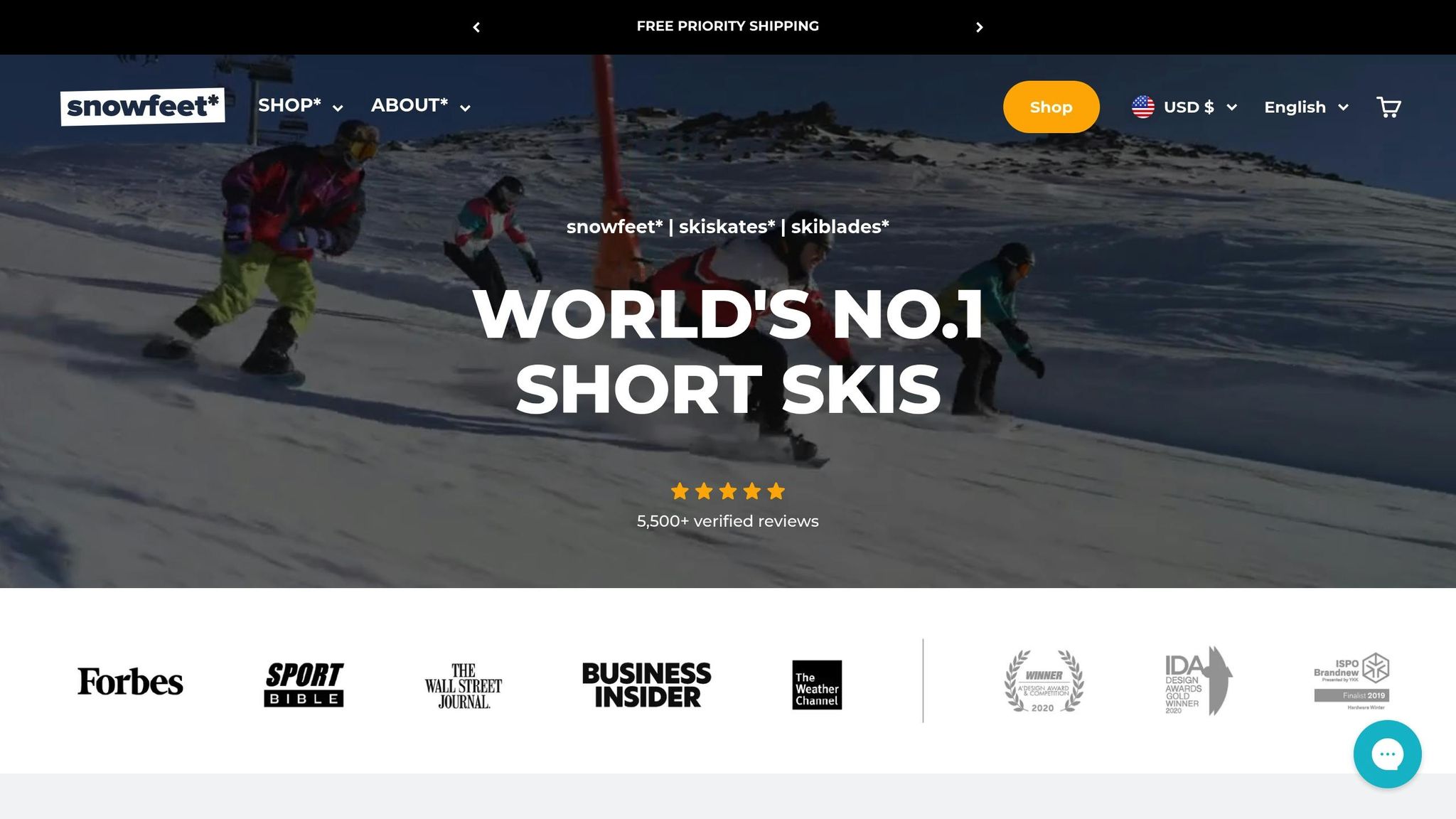
Tradiční dlouhé lyže mohou být v úzkém nebo náročném terénu problém, což ztěžuje přechody. Krátké lyže Snowfeet* jsou naopak kompaktní a velmi obratné, ideální pro omezené prostory a náročné trasy.
Jedna z největších výhod? Kompatibilita s botami. S krátkými lyžemi Snowfeet* můžete používat své běžné zimní boty. Není třeba objemné, specializované vybavení – tato flexibilita je pro mnoho zimních sportovců zásadní změnou.
Pokud jste v lyžařském túrování nováčkem nebo přecházíte ze snowboardingu, oceníte mírnější učební křivku. Reagující ovládání krátkých lyží vám pomůže rychleji získat sebevědomí, což znamená plynulejší přechody, jak se zlepšujete ve svých dovednostech.
Navíc kompaktní design Snowfeet* krátkých lyží je činí snadno přenosnými na smíšených trasách, kde lyžování není možné. Jsou také jednodušší na údržbu a skladování, což je bonus během dlouhé sezóny dobrodružství. Tyto praktické výhody se sčítají a dělají ze Snowfeet* jasnou volbu pro každého, kdo chce zvládnout efektivní přechody v terénu.
Rychlý přechod ze stoupání na lyžování. Tipy SkiMo od Uphill Athlete.
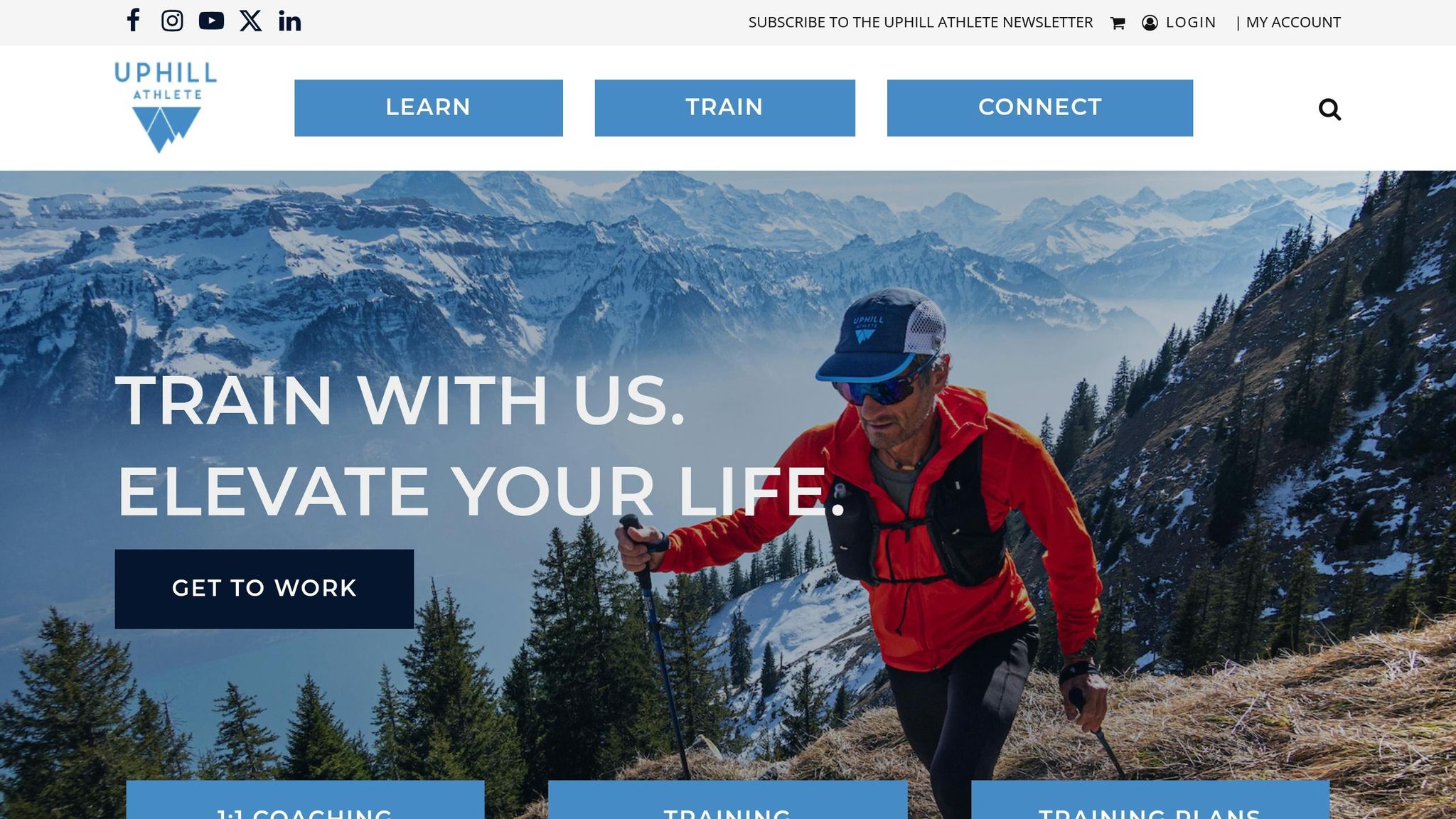
Krok za krokem: Přepnutí z režimu stoupání do režimu lyžování
Přechod z režimu stoupání do režimu lyžování se Snowfeet* krátkými lyžemi je hračka ve srovnání s tradičními dlouhými lyžemi. S správným přístupem můžete přepnout rychle a bezpečně. Tady je návod, jak na to:
Krok 1: Najděte stabilní místo
Začněte tím, že najdete rovné a bezpečné místo. Budete potřebovat dostatek prostoru k pohybu bez obav z prudkých svahů nebo náročných sněhových podmínek.
Jednou z výhod Snowfeet* krátkých lyží je jejich kompaktnost. Na rozdíl od dlouhých lyží se snadno ovládají v úzkých prostorách, takže se nemusíte bát, že by se špičky nebo paty zachytily o cokoli. Postavte se tak, abyste zabránili sklouznutí – postavení čelem do kopce na mírném svahu vám pomůže zůstat stabilní při úpravách.
Krok 2: Nastavení vázání a bot
Jakmile jste stabilní, je čas upravit své vybavení. Přepněte vázání z režimu stoupání do režimu sjezdu. Vázání Snowfeet* jsou navržena pro rychlé a bezproblémové přepínání.
Pokud je potřeba, můžete pomocí šroubováku upravit otvory na páscích, aby perfektně seděly na vaše boty. Snowfeet* krátké lyže jsou kompatibilní s běžnými zimními botami, takže se nemusíte zabývat objemem nebo složitostí specializovaných turistických bot. Tento univerzální systém upevnění celý proces zrychluje a zjednodušuje.
Krok 3: Závěrečná bezpečnostní kontrola
Než vyrazíte do sjezdu, věnujte chvíli kontrole všeho. Ujistěte se, že vaše vázání jsou pevná a bez sněhu či ledu. Jemně zatlačte, abyste otestovali jejich reakci, a odstraňte sníh z mechanismů a podrážek bot, aby vše fungovalo hladce.
U dlouhých lyží může být tento krok trochu náročný kvůli jejich velikosti a váze. Ale se Snowfeet* krátkými lyžemi je mnohem snazší je zvednout, upravit a přemístit bez námahy.
Nakonec rychle zkontrolujte hrany. Po každém použití osušte kovové hrany, aby se zabránilo korozi, a pokud je budete delší dobu skladovat, otřete je trochou oleje. Čisté hrany znamenají lepší kontrolu při sjezdu, takže můžete trávit více času lyžováním a méně času úpravou vybavení.
sbb-itb-17ade95
Tipy pro hladší přechody
Doladění vašich přechodů může výrazně ovlivnit vaše dobrodružství v terénu. Se Snowfeet* krátkými lyžemi jste už před ostatními oproti tradičním dlouhým lyžím. Tyto tipy vám pomohou vytěžit ze svého vybavení maximum a udržet vše v hladkém chodu.
Cvičení dělá mistra
Tajemstvím plynulých přechodů je praxe. Začněte tím, že si projdete celý přechodový postup na rovině. Pomůže vám to vybudovat svalovou paměť a sebevědomí před tím, než vyrazíte do terénu. Zvykněte si na vázání Snowfeet*, trénujte nastavování a dokonce se měřte, abyste sledovali svůj pokrok.
Krása Snowfeet* Mini Ski Skates je v jejich kompaktnosti. Na rozdíl od tradičních 70palcových touringových lyží jsou snadno ovladatelné i v menších prostorách. Přechody si můžete dokonce procvičit v garáži, pokud počasí nepřeje.
Využijte univerzální kompatibilitu bot produktů Snowfeet*. Trénink se stejnými zimními botami, které budete používat na horách, znamená žádná překvapení, až přijde čas na opravdovou jízdu. Každý krok se stane druhou přirozeností.
Udržujte své vybavení
Udržování vašeho vybavení v perfektním stavu je klíčem k hladkým přechodům. U stoupacích pásů je skladujte uvnitř bundy mezi výstupy, aby zůstaly teplé. Studené pásy mohou ztratit přilnavost a být obtížné na manipulaci, což promění rychlý přechod v frustrující záležitost.
Snowfeet* nabízí údržbové nástroje jako vosk a náhradní popruhy navržené pro jejich systémy krátkých lyží. Pravidelně kontrolujte vázání na opotřebení nebo nečistoty. I když jsou vázání Snowfeet* jednodušší než tradiční touringové sestavy, pravidelné čištění – například odstranění sněhu a ledu po každém použití – je stále nezbytné. A vždy mějte po ruce náhradní popruh pro klid na duši. S dobře udržovaným vybavením strávíte méně času řešením problémů a více času užíváním svahů.
Oblékejte se strategicky
To, co máte na sobě, může výrazně ovlivnit efektivitu přechodů. Vrstvení je váš nejlepší přítel: začněte s vrstvou odvádějící vlhkost, přidejte izolační střední vrstvu a zakončete větranou vrchní vrstvou. Tato kombinace vás udrží v pohodlí při teplotních výkyvech, které v mnoha amerických horských oblastech často kolísají mezi 10°F a 40°F.
Rukavice jsou další důležitá věc. Snowfeet* systémy se snadno nastavují i s objemnějšími zimními rukavicemi, takže se můžete soustředit na udržení tepla bez ztráty obratnosti. Není potřeba jemná motorika, kterou vyžadují složitější touringové sestavy.
Je také rozumné sbalit si lehký péřový vesta. Přechody jsou chvíle, kdy jste nejvíce vystaveni chladu, zvlášť pokud fouká vítr. Vesta rychle zahřeje střed těla, aniž by omezovala pohyb, a zabere téměř žádné místo v batohu – ideální doplněk k vašemu lehkému vybavení Snowfeet*.
Nakonec přemýšlejte o tom, kde si ukládáte své nezbytnosti. Mějte často používané nástroje, jako je malý šroubovák na vázání, v snadno přístupných kapsách. Protože je vybavení Snowfeet* kompaktní, budete mít více místa na nošení dalších vrstev a nástrojů, což udrží vše organizované a po ruce, když to nejvíce potřebujete.
Snowfeet* vs. dlouhé lyže a snowboardy: Porovnání efektivity přechodu
Když jde o dobrodružství mimo sjezdovky, rychlé přechody mezi režimy lezení a lyžování mohou rozhodnout o vašem zážitku. Právě zde Snowfeet* vyniká. Ve srovnání s tradičními dlouhými lyžemi a snowboardy nabízí Snowfeet* krátké lyže lehký a kompaktní design, který je ideální pro navigaci v úzkých prostorech a snadné přechody mezi režimy. Pojďme se podívat, jak si Snowfeet* vede proti konkurenci.
Porovnávací tabulka: Snowfeet* vs. dlouhé vybavení
| Vlastnost | Snowfeet* krátké lyže | Tradiční dlouhé lyže | Snowboardy |
|---|---|---|---|
| Délka | Přibližně 15–47 palců (liší se podle modelu) | Přibližně 65–75 palců | Přibližně 55–65 palců |
| Váha | Lehké a přenosné | Obecně těžší | Střední váha |
| Čas přechodu | Rychlé, snadné přepínání režimů | Pomalejší, potřebuje více místa | Pomalejší ve srovnání s kompaktním vybavením |
| Kompatibilita bot | Funguje se zimními botami, lyžařskými botami nebo snowboardovými botami | Vyžaduje speciální touringové boty | Navrženo pro snowboardové boty |
| Ovladatelnost v úzkých prostorech | Vynikající díky kompaktní velikosti | Omezená kvůli delší délce | Střední ovladatelnost |
| Uložení v batohu | Kompaktní, snadno se vejde do batohu | Objemnější, často vyžaduje externí upevnění | Objemnější, méně vhodné do batohu |
Tato tabulka zdůrazňuje klíčové vlastnosti Snowfeet*, díky nimž je jasné, proč jsou nejlepší volbou pro každého, kdo hledá efektivitu a přenosnost v přírodě.
Proč je Snowfeet* lepší volbou
Produkty Snowfeet* přinášejí obratnost a jednoduchost do vašich dobrodružství v přírodě. Jejich kompaktní velikost je ideální pro rychlé přechody, zejména v úzkých nebo náročných podmínkách, kde se tradiční dlouhé lyže nebo snowboardy mohou zdát neohrabané.
Jedna z nejlepších vlastností? Jejich všestrannost. Snowfeet* fungují s různou obuví, včetně zimních bot, lyžařských bot a snowboardových bot. To eliminuje potřebu speciálních touringových bot, což vám ušetří peníze i starosti. Je to praktická volba pro každého, kdo chce mít věci jednoduché a dostupné.
Přenosnost je další velkou výhodou. Tyto krátké lyže jsou dostatečně lehké, aby se daly schovat do batohu, což vám uvolní ruce a usnadní dlouhé výstupy nebo náročné přechody. Navíc intuitivní systém vázání znamená, že strávíte méně času nastavováním a více času užíváním si dobrodružství. Ať už se pohybujete úzkými stezkami nebo zdoláváte strmé stoupání, Snowfeet* vám zajistí hladký a efektivní zážitek na každém kroku.
Ovládněte přechody při skitouringu se Snowfeet*
Když jde o skitouring, hladké přechody mohou znamenat zásadní rozdíl. Právě zde vynikají krátké lyže Snowfeet* – jsou rychlejší a snadněji ovladatelné než tradiční dlouhé lyže nebo snowboardy.
Snowfeet* jsou k dispozici ve velikostech od 15 do 47 palců, což vám pomůže snížit objemné vybavení a fyzickou námahu při přechodech. Tyto lehké, kompaktní možnosti proměňují často neohrabaný proces v rychlý a plynulý. A to nejlepší? Můžete je používat s běžnými zimními botami, lyžařskými botami nebo snowboardovými botami – není potřeba žádná speciální obuv.
Lehký design není jen o pohodlí při přechodech – Snowfeet* se také neuvěřitelně snadno nosí a skladuje. Na rozdíl od dlouhých lyží, které vyžadují speciální úložný prostor nebo zacházení, se vybavení Snowfeet* pohodlně vejde do vašeho batohu. To znamená, že můžete trénovat techniku nebo vyrazit na stezky kdykoli a kdekoli chcete.
Ať už právě začínáte, nebo vyrážíte na túry už roky, Snowfeet* nabízí jednodušší způsob, jak zvládat přechody. Od rychlých úprav přes univerzální kompatibilitu s botami až po snadné manévrování v úzkých místech – tyto krátké lyže jsou průlomem pro každého, kdo chce efektivněji vyrážet na túry.
Můžete si vybrat mezi ultra přenosnými Snowfeet* Mini Ski Skates (15 in / 38 cm) nebo Snowfeet* Short Skis (47 in / 120 cm) pro pokročilejší výkon. V každém případě investujete do vybavení, které usnadňuje přechody a zpříjemňuje vaše túry.
Často kladené otázky
Jak Snowfeet krátké lyže usnadňují přechody ve srovnání s tradičními dlouhými lyžemi?
Snowfeet krátké lyže jsou o plynulých přechodech a snadném ovládání, což je činí vynikající volbou pro lyžařské túry. Jejich kompaktní design znamená, že se můžete pohybovat rychleji a bez zbytečných komplikací, zejména v úzkých prostorách nebo na nerovném terénu – místech, kde se delší lyže mohou zdát neohrabané a nepohodlné.
Zatímco tradiční dlouhé lyže jsou stavěny pro stabilitu při vysokých rychlostech, Snowfeet krátké lyže se zaměřují na obratnost a jednoduchost. Jsou perfektní pro zvládání náročných úseků a rychlé úpravy během túry, což vám ušetří čas i námahu. Díky jejich intuitivnímu designu si lyžaři všech úrovní mohou užít uvolněnější a efektivnější zážitek na svazích.
Proč jsou Snowfeet krátké lyže ideální pro lyžařské túry, zejména v náročném terénu nebo úzkých prostorách?
Snowfeet krátké lyže jsou průlomem v lyžařských túrách, zejména když čelíte náročnému terénu. Díky své kompaktní velikosti usnadňují proplétání hustými stromy nebo navigaci úzkými stezkami – už žádné zápasy s objemnými, tradičními lyžemi nebo snowboardy. Navíc snadno zvládají nerovné nebo zledovatělé povrchy, což vám dává obratnost a jistotu zvládnout ty nejtěžší úseky.
Další velká výhoda? Jsou super lehké. To znamená menší zátěž na nohy během dlouhých túr, takže můžete pokračovat, aniž byste se cítili vyčerpaní. Navrženy s ohledem na všestrannost, Snowfeet krátké lyže jsou ideální pro smíšený terén a rychlé, improvizované úpravy. Ať už prozkoumáváte úzké prostory nebo přecházíte na různorodých površích, tyto lyže jsou postaveny tak, aby držely krok.
Mohu používat běžné zimní boty se Snowfeet krátkými lyžemi a jak to ovlivní můj zážitek z lyžařských túr?
Ano, Snowfeet krátké lyže jsou navrženy tak, aby fungovaly s běžnými zimními botami nebo snowboardovými botami. Přilnou pevně kolem kotníků, což vám dává lepší kontrolu a bezpečnější jízdu. Nejlepší na tom? Nepotřebujete speciální lyžařské boty, abyste mohli vyrazit na svah, což přináší spoustu pohodlí.
Používání vašich běžných zimních bot se Snowfeet krátkými lyžemi nejen usnadňuje pohyb, ale také zlepšuje, jak se pohybujete na sněhu. Jejich lehký, kompaktní design je ideální pro plynulé přechody. Díky tomu jsou skvělou volbou pro začátečníky nebo kohokoli, kdo chce jednodušší a bezstarostnější alternativu k tradičním lyžím nebo snowboardům.







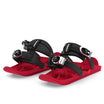
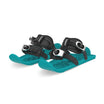












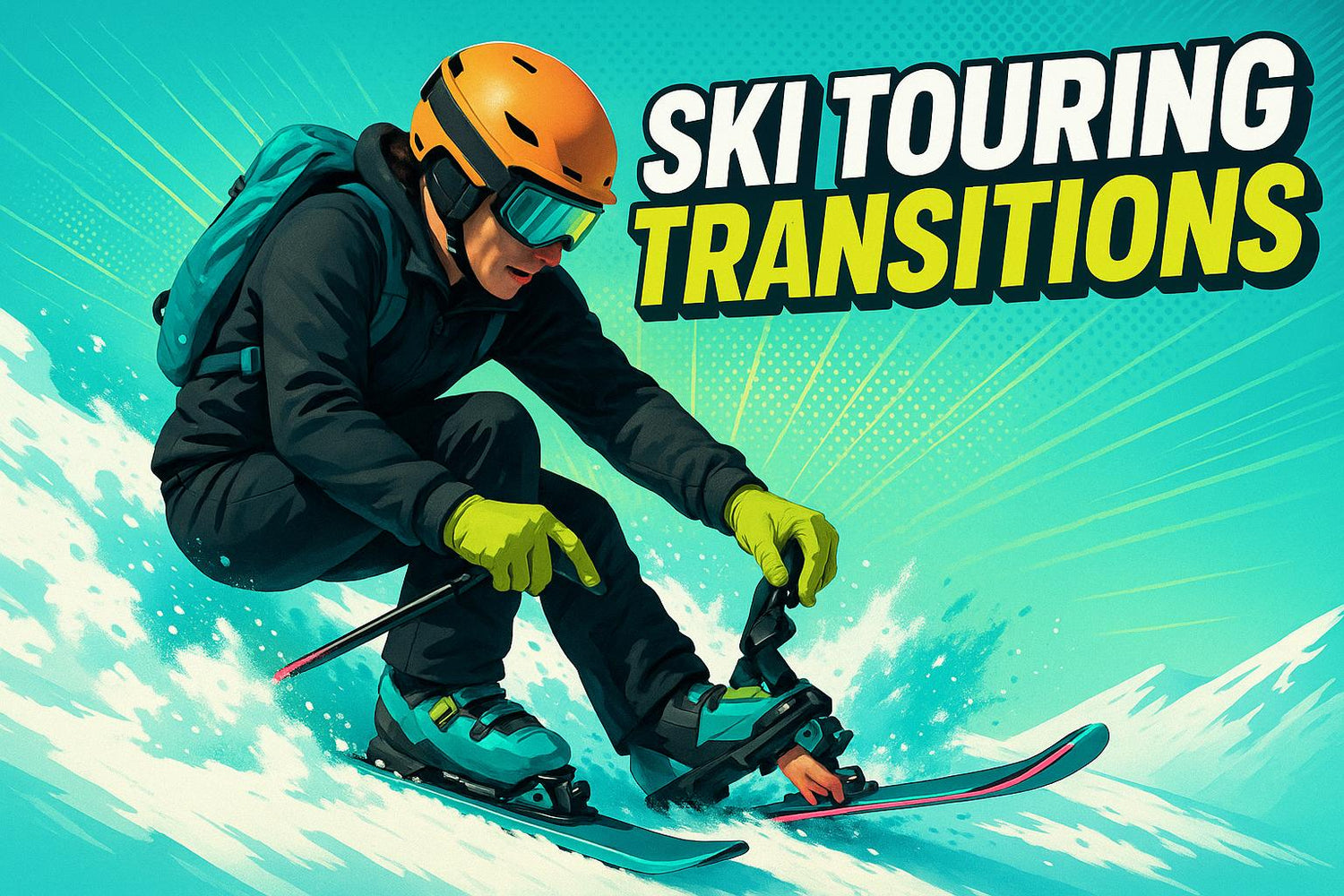
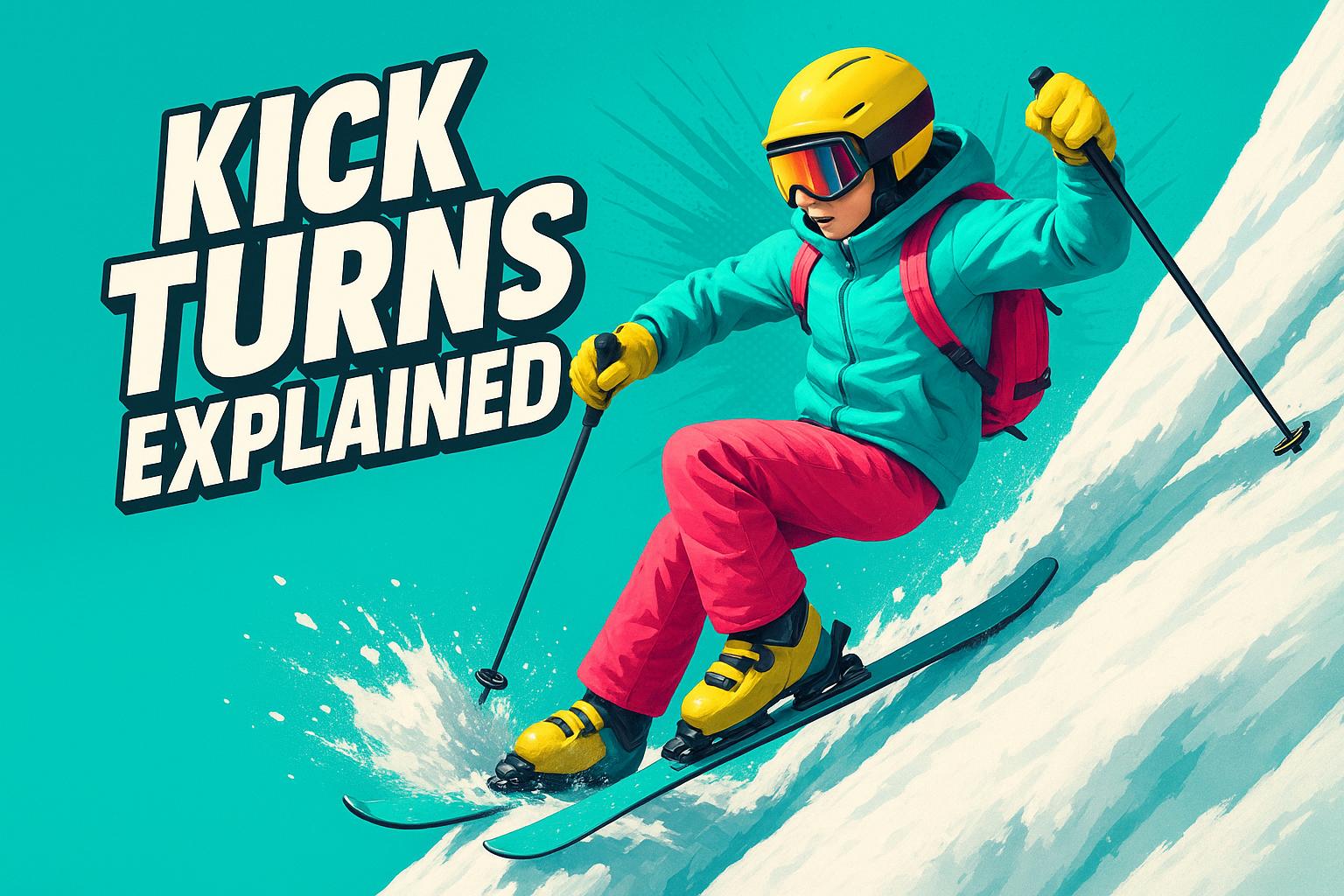
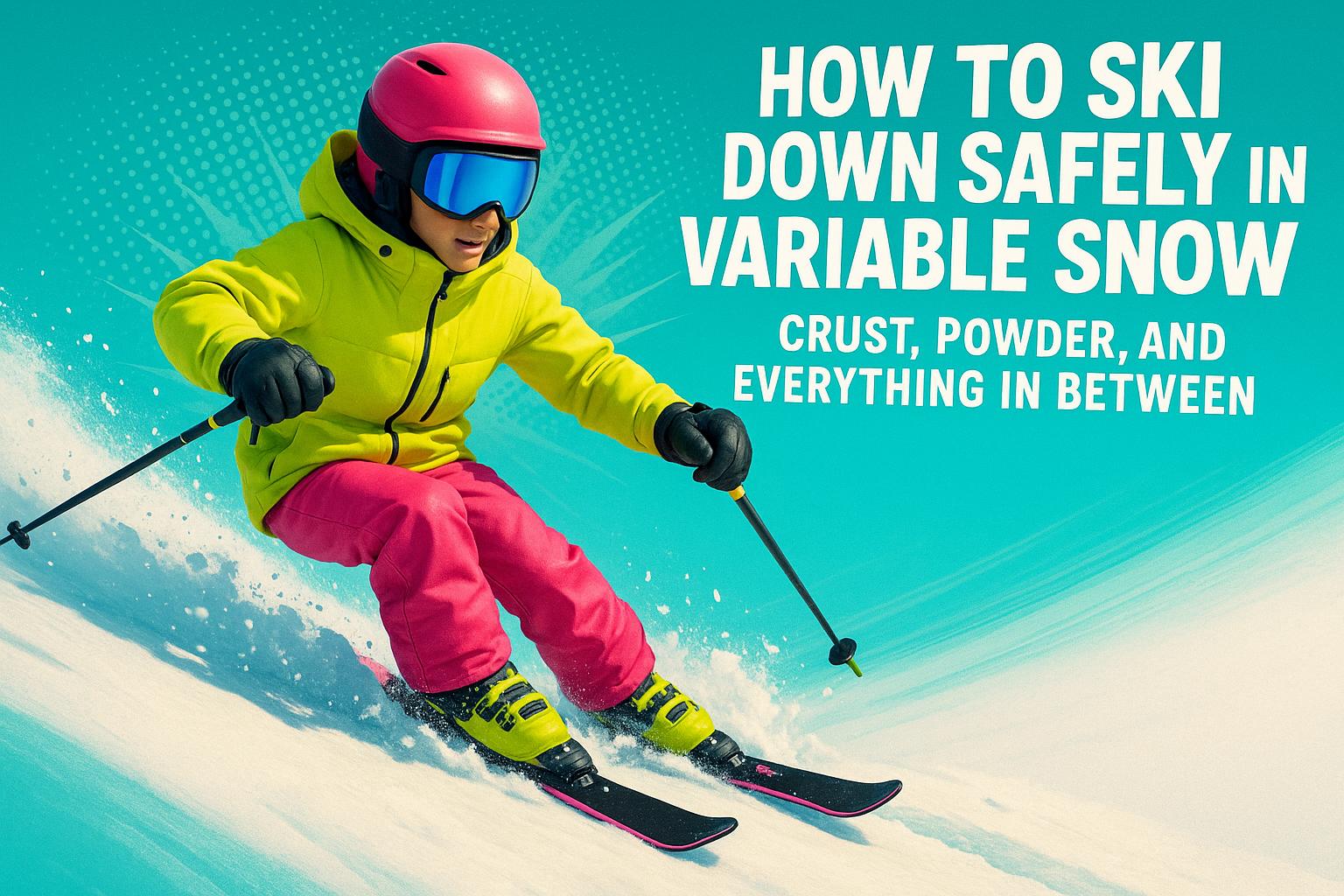




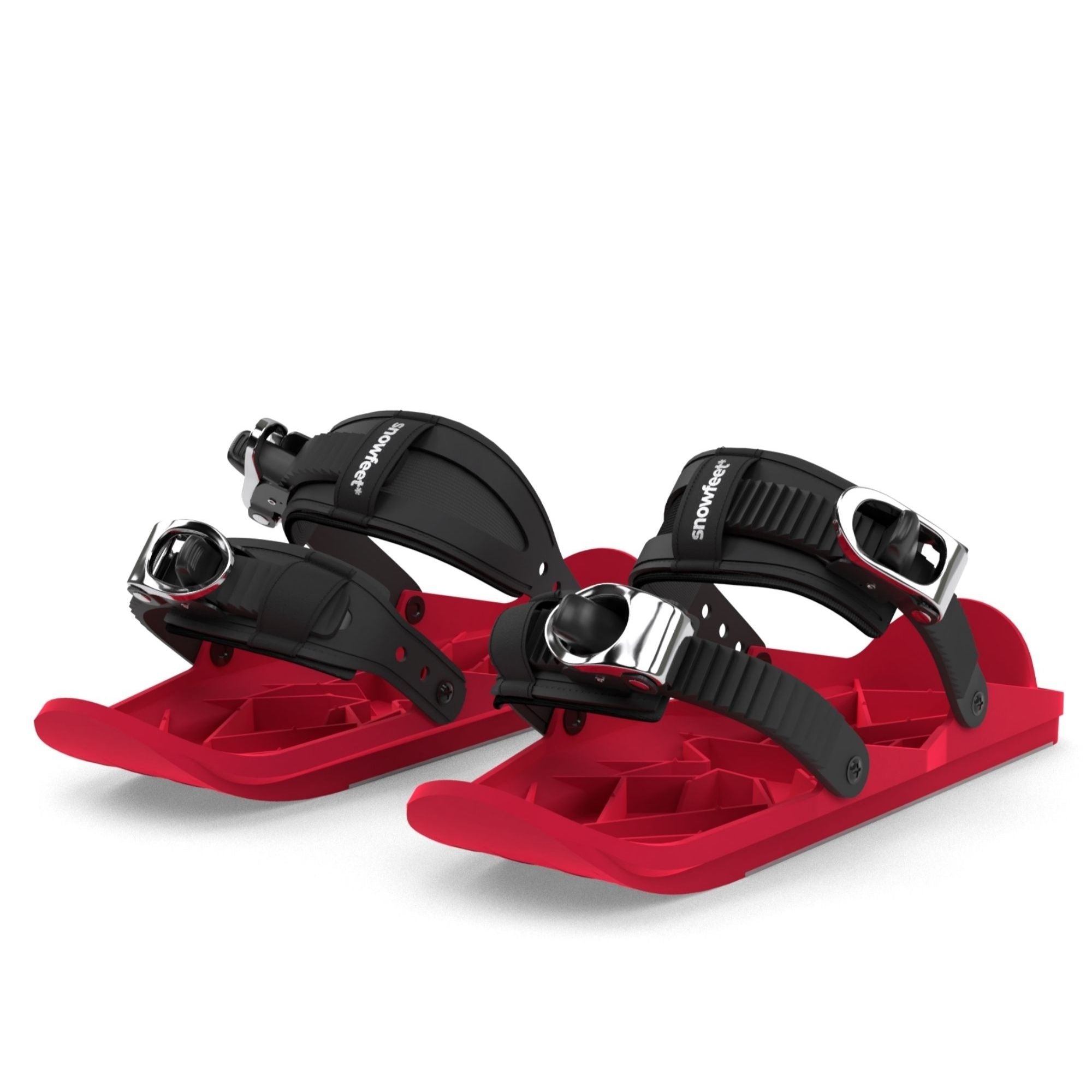
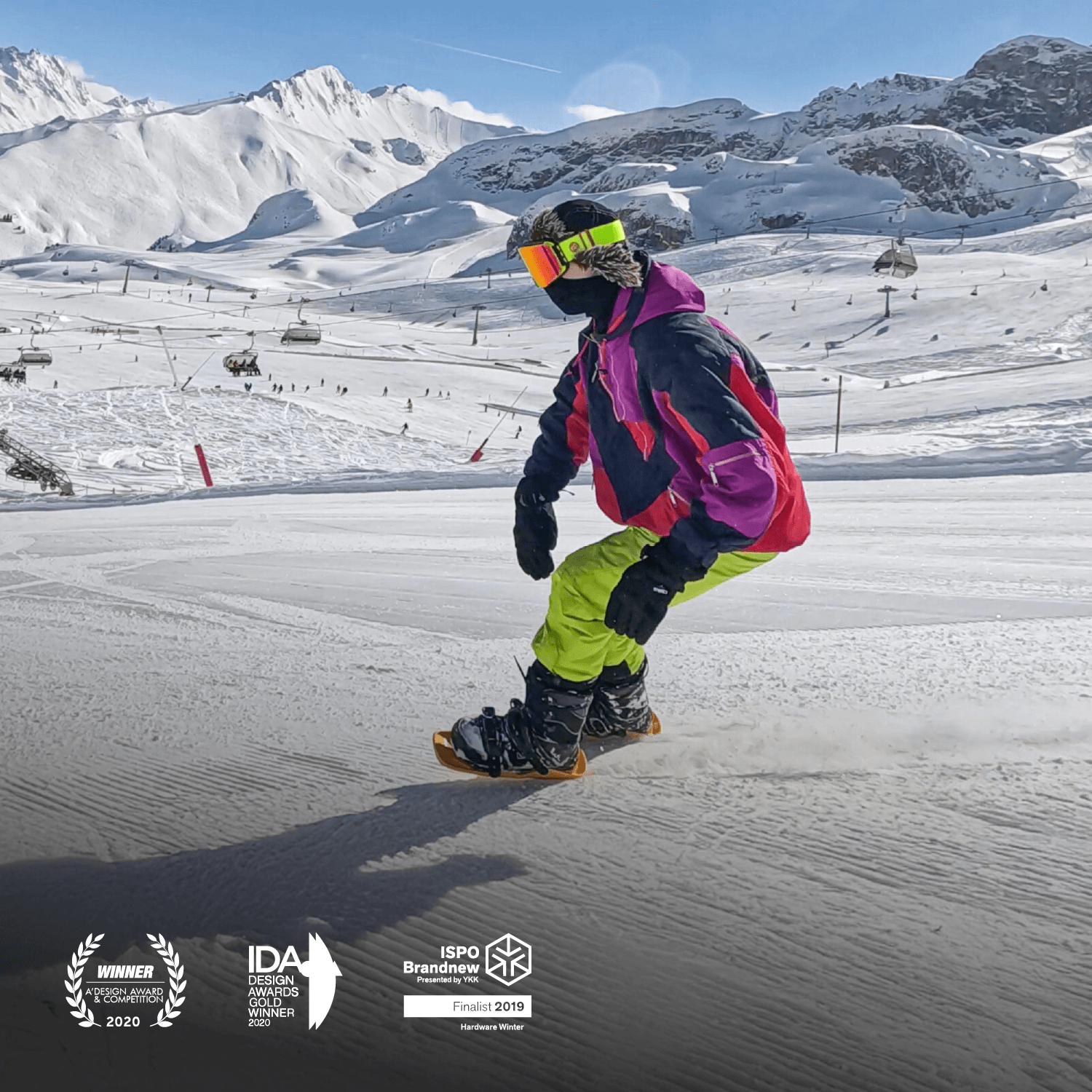




Zanechte komentář
Tento web je chráněn službou hCaptcha a vztahují se na něj Zásady ochrany osobních údajů a Podmínky služby společnosti hCaptcha.